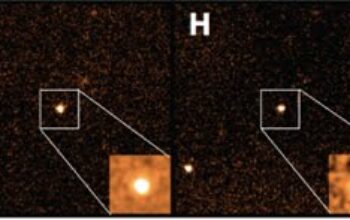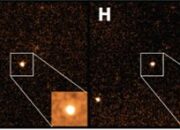As humanity stands on the precipice of a technological renaissance, the prospect of constructing a quantum computer comprising one billion quantum bits—commonly referred to as qubits—beckons us with promises both exhilarating and daunting. In this paradigm shift, critical inquiry regarding the implications, challenges, and transformative potential of such a formidable computational prowess becomes paramount. What would a world equipped with a one billion qubit quantum computer look like? This exploration pivots on fundamental tenets of physics, computer science, and the philosophical underpinnings of knowledge itself.
An understanding of qubits as the cornerstone of quantum computing is essential. Unlike classical bits, which are confined to binary states (either 0 or 1), qubits embody the strange phenomena of superposition and entanglement. The ability of qubits to exist in multiple states simultaneously amplifies computational capacity. This exponential escalation implies that a one billion qubit setup could potentially execute calculations far beyond the reach of any classical supercomputers. Tasks deemed intractable using today’s technology could transform from theoretical musings to practical reality.
The monumental capability offered by a one billion qubit quantum computer brings with it potential applications that stretch far across diverse fields. In the realm of cryptography, for instance, traditional encryption methods that safeguard sensitive information could become obsolete. The Shor’s algorithm, designed to factor large integers, exemplifies how a sufficiently powerful quantum computer could breach classical encryption standards with disconcerting ease. This upheaval necessitates an urgent reevaluation of data security protocols and encryption methodologies in an era of quantum supremacy.
Equally fascinating is the potential for quantum simulations. The complexity inherent in numerous chemical and biological processes exceeds classical computational models. With the ability to simulate molecular interactions accurately, a one billion qubit quantum computer could revolutionize drug discovery and materials science. The creation of new pharmaceuticals could accelerate remarkably, facilitating the treatment of previously insurmountable diseases. Understanding superconductivity and developing materials with extraordinary properties fundamentally resides within the grasp of sophisticated quantum simulations.
Examining the ramifications on artificial intelligence (AI) offers yet another lens through which to assess the promise of a quantum future. Quantum computing presents unprecedented opportunities for machine learning algorithms, enhancing their capacity to recognize patterns and make predictions. The intricate relationships among vast datasets, often muddled for classical computers, could become discernible, undoubtedly propelling AI capabilities to uncharted territories. Enterprises in sectors ranging from finance to climate modeling could harness this newfound power to bolster decision-making processes.
Yet, while the prospect is alluring, the voyage toward achieving a quantum computer with one billion qubits is fraught with challenges that demand ingenuity and cross-disciplinary collaboration. One of the foremost obstacles lies in maintaining qubit coherence. Quantum systems are notoriously susceptible to environmental decoherence—the loss of quantum behavior due to interaction with external environments. Mitigating this disruption to maintain quantum states over extended periods is paramount. The quest necessitates advancements in quantum error correction and fault tolerance, paving the way for stable, sizable quantum systems.
Moreover, the intricacies of qubit interconnections pose significant engineering hurdles. Quantum entanglement, while powerful, requires finely tuned systems to ensure effective communication between qubits. The arrangement and architecture of qubits must minimize error propagation while maximizing entanglement fidelity. This challenge introduces a symphony of electrical, optical, and superconductive technologies, ultimately calling for innovative solutions that transcend existing paradigms.
One must also grapple with the ethical considerations that accompany such powerful technology. The emergence of quantum computing heralds a dual-edged sword; while it carries the potential to solve pressing global issues, it also poses existential risks. Addressing concerns surrounding misuse—whether to create more sophisticated cyber-attacks or exploit advancements in surveillance—requires a comprehensive framework for governance and ethical stewardship. The dialogues emerging from the development of such technology will shape both societal norms and legal infrastructures in profound ways.
Looking toward the future, the societal transformations emanating from a billion qubit quantum computer will be profound. The implications extend beyond mere computational speed; they prompt a philosophical examination of intelligence, creativity, and knowledge itself. Will tasks traditionally relegated to human cognition be overshadowed by machines capable of processing and analyzing information with unfathomable rapidity? This question invites a rethinking of collaboration between humans and machines, suggesting that augmenting human capabilities rather than outright replacement should form the cornerstone of future development.
Finally, as we contemplate the prospects of a one billion qubit quantum computer, it becomes apparent that we are merely at the crux of an era defined by unfathomable potential. This journey will demand resilience, adaptability, and, above all, a commitment to responsibly harnessing the transformative power of quantum computing. Ultimately, it is a call to action for the global community—a memorable invitation to embrace curiosity, interrogate reality, and innovate boldly as we embark on this extraordinary expedition.










